NINA FIOCCO
Monte Grappa
History is made in three dimensions and narrated in two
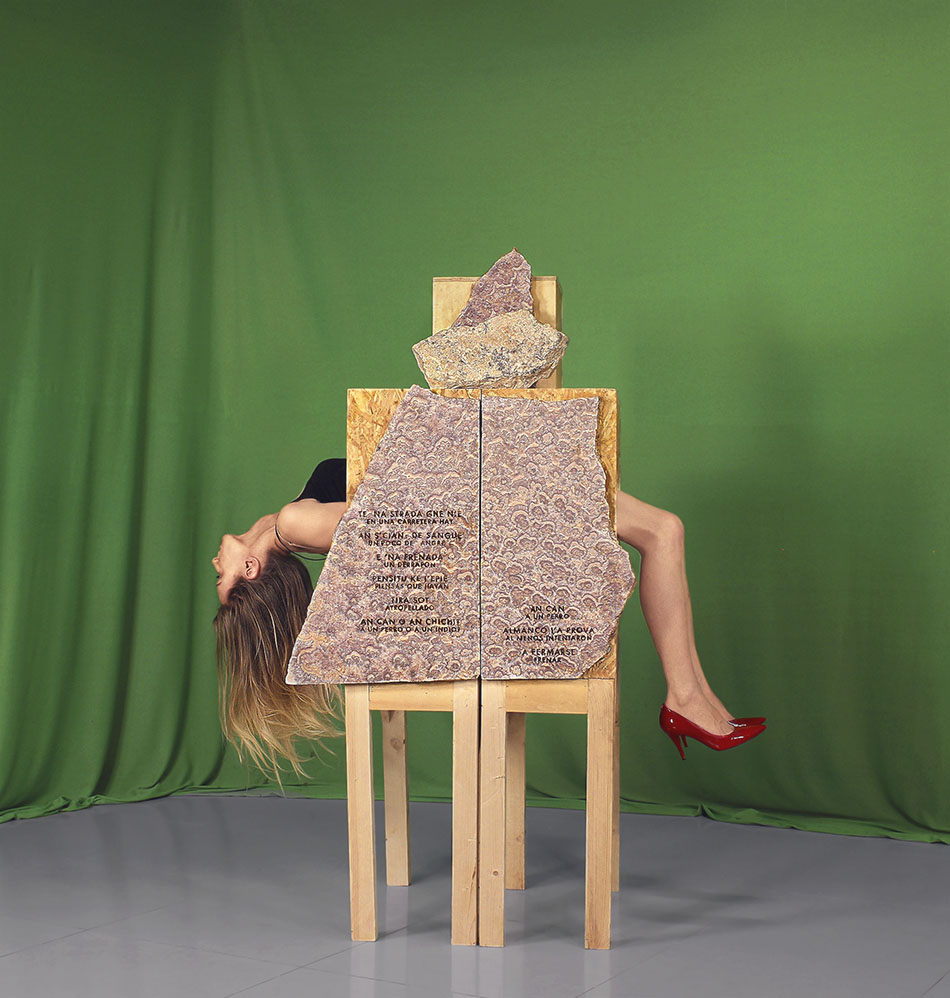
Nina Fiocco, Malinche, 2016 – Print lambda on Dibond, 17 x 18 inch
.
OPENING: Saturday, 25 May 2017 – h 6.00 pm
26 May 2017 – 10 September 2017
.
Curated by MARTA FERRETTI
Artericambi presents “Monte Grappa. History is made in three dimensions and narrated in two”, the first solo show in Italy by the artist Nina Fiocco made specifically for the gallery spaces.
Inspired by the figure of the writer Emilio Salgari, the artist focuses his research on the concept of narration and distance: a deforming relationship that in the society of communication, as opposed to the direct experience of reality, generates a one-sided relationship, transforming itself into an instrument of domination and control. Starting from the analysis of this mechanism, the exhibition develops around the idea of a colony, staging the micro-history, still current, of the relationship of Italian Fascism with the Chipilo community in Mexico.
The latter is a territory assigned by the Mexican government to Italian migrants who arrived in Latin America in the late nineteenth century. Following a complex rhetorical operation carried out by the Regime on a visit to Latin America in 1924, Chipilo is symbolically transformed into an “Italian colony”: the Mexican hilly landscape is renamed Monte Grappa. A stone from the mountain of the same name becomes the central monument of the town; in a few years the Casa del Fascio will be built in the city. The indissoluble and persuasive link between the homeland and the colony is implemented through a constant visual and discursive call between the land of origin and the land of landing, thus creating a relationship of interdependence between the two places.
The project addresses the visual transformation and rhetoric of Italian national symbols on Mexican soil by bringing together in a single horizon the mechanism of deception perpetuated by political propaganda which, like a spell, tells, transforms and then documents new historical truths.
“I have always been interested in how the knowledge of a distance, whether spatial or temporal, can be associated with the ability not only to tell the truth but also, as Benjamin adds, to find an escape (which the complicit audience grants to the narrator) towards the ‘wonderful’. In my practice – says the artist – I aspire to this: to tell reality in order to allow myself the luxury of proposing a fantastic abstraction of it “.
On display a corpus of works, which includes an installation, a series of two-dimensional sculptures and a video, reconstructs an imagined, almost poetic cartography between migrants and their land of origin, where the representation is nourished by a nostalgic feeling that he consoles himself only in the symbolic construction of mirages of closeness.
In this way the artist wants to question the abuse carried out – even if only metaphorically – by the Italian regime in Mexico and the way in which the fascist identity reconstruction is perpetuated to this day, promoting, in the distance, imaginaries of exclusion and divisions within the community.
The exhibition is part of the 2017 edition of VeronaRisuona, a review of Sound Art promoted by the Academy of Fine Arts of Verona, Conservatorio Dall’Abaco-Verona, University of Music and Theater of Göteborg (coordination: Diplomart).
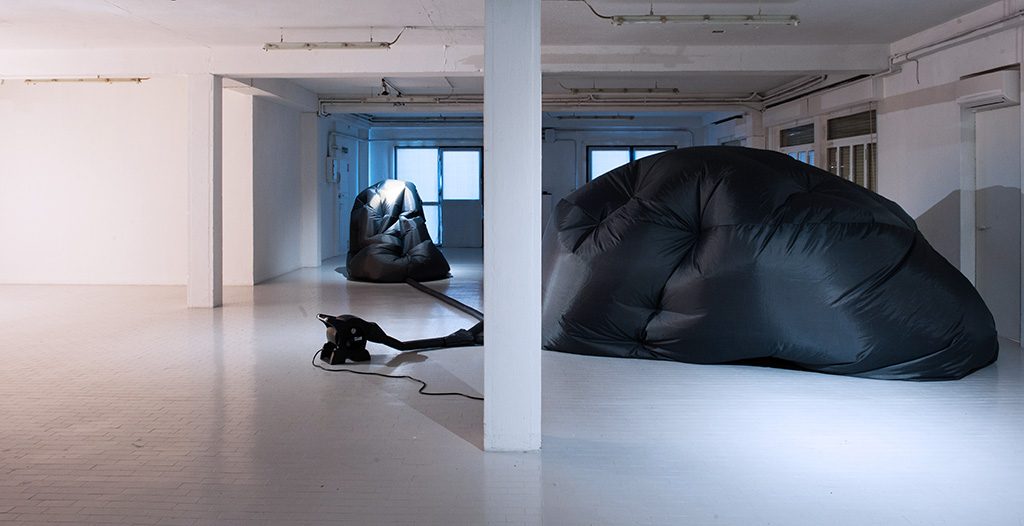
Nina Fiocco, History is made in three dimensions and narrated in two, 2017 – Two inflatables, electric system, compressor, 78 x 118 x 86 and 98 x 70 x 70 inch
___________________________________________________________________________________________________________________________
BIO
Nina Fiocco (Feltre, 1985) Artist and researcher. You live and work in Puebla (Mexico).
As an artist, she Nina is the founder of the Italian-Mexican collective “Método Salgari” (2013). In 2011 she was selected for the annual residence of the Bevilacqua La Masa Foundation (Venice). In 2012 she moved to Mexico for a research residency that started the Monte Grappa project (tutor Magnolia De la Garza, Museo Tamayo – project funded by Movin’up). In 2014 she was selected as an Italian artist by the BBB de Tolosa, the Maison des Artes Georges Pompidou de Cajarc and the Chapelle Saint Jacques de Saint Gaudens (France) for the Piano / Alto project.
She has participated in residency programs in Italy, Serbia, France, Colombia and Hungary.
Her work has been presented or exhibited in various cultural spaces including Careof, Macao, O ‘, Fabbrica del Vapore, Studi Festival (Milan, Italy), Bevilacqua La Masa Foundation, Buziol Foundation, A + A Gallery (Venice, Italy ), Maison des Arts Georges Pompidou, Maison Daura, BBB, Chapelle Saint Jacques (France), Bozar (Brussels, Belgium), MUCA Museum (Mexico City), BJCEM (Tirana, Albania), TRAFO (Szczecin, Poland) CCCB ( Córdoba, Mexico), Indipendents-ArtVerona, Interzona (Verona, Italy), NoAutomatico, Ciudad Expandida, Capilla del Arte, Casa Nueve, Alliance Frances (Puebla, Mexico), Jaszdosza Art Camp (Hungary) CRAC (Cremona, Italy), Urban Lab (Medellin, Colombia), East China University (Shanghai, China), AAA (Hong Kong), Beograd Cultural Center (Belgrade, Serbia), Festival Internacional Cervantino (San Cristobal de las Casas, Mexico), Euganea Film Festival (Padua, Italy), Santarcangelo 40 (Santarcangelo, Italy). You also participated in the Moleskine nomadic exhibition projects – Artist’s book and Detour.
She is currently a professor at the Academy of San Carlos UNAM (Mexico City) and the Tecnológico de Monterrey – Campus Puebla. Particularly interested in the field of participatory practices, she coordinates the research and conference cycle “Políticas y Poéticas del arte participativo en México” at the Amparo Museum (Puebla, Mexico). In the past, from 2012-2014, she was coordinator of the museum and exhibition project at INAH (Puebla, Mexico).
http://cargocollective.com/ninafiocco
In 2013 she founded the collective Metodo Salgari with Andrea Balestrero, Ulises Matamoros and Rogelio Sánchez, which explores the concepts of time, space and memory. Inspired by the historical figure of the writer Emilio Salgari, the project applies his stationary travel mode to our days. Thus, representations of places, landscapes or objects, already mediated by other descriptions or images, are used to metaphorize and explore our current condition: perpetually connected, often virtually elsewhere but often without direct experience.
With the intention of exploring this mode of knowledge “from afar” and with the aim of verifying demagogues, errors and weaknesses of this system, the collective works on the constitution of an imaginary atlas starting from contact with different communities or groups ; through the common search for narratives and clues, Método Salgari reconstructs remote places through the use of a language that meets between art and architecture.
___________________________________________________________________________________________________________________________
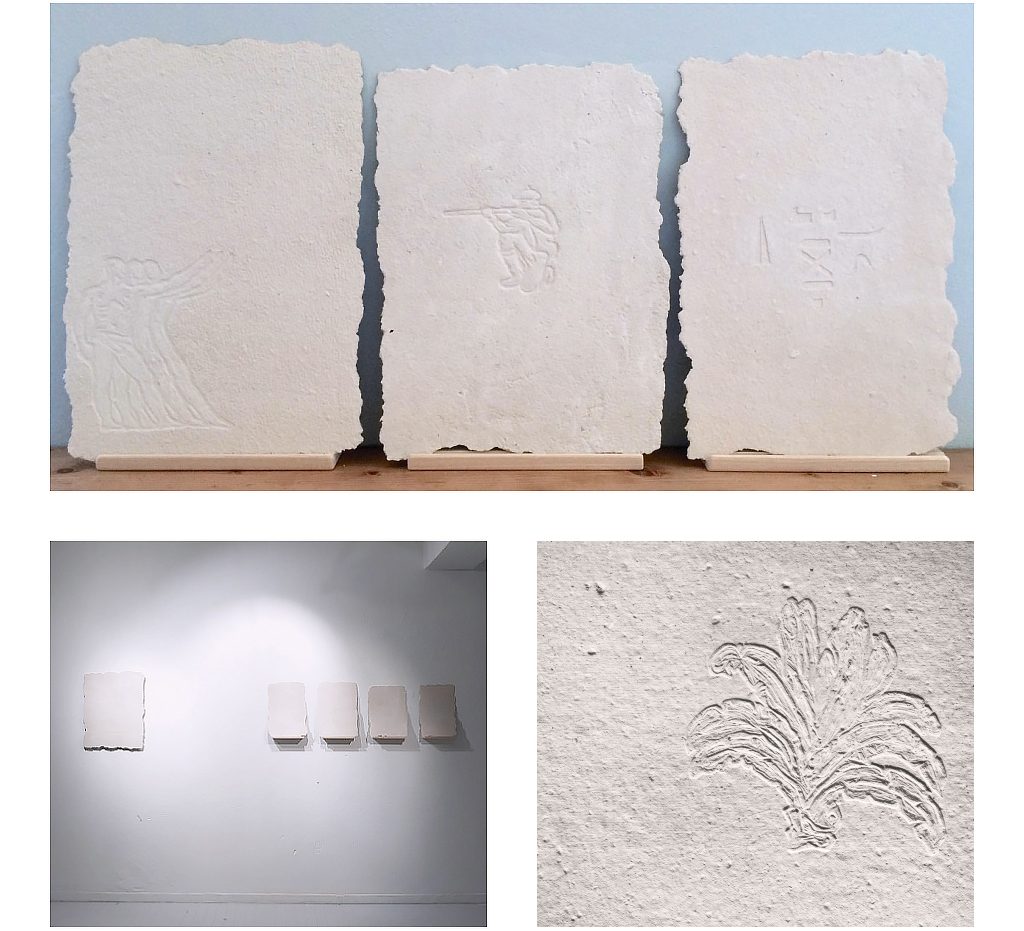
Nina Fiocco, The stone on the enemy’s forehead, 2017 – Drawings on Tecali marble powder and paper, 15 x 12 inch (each)
.
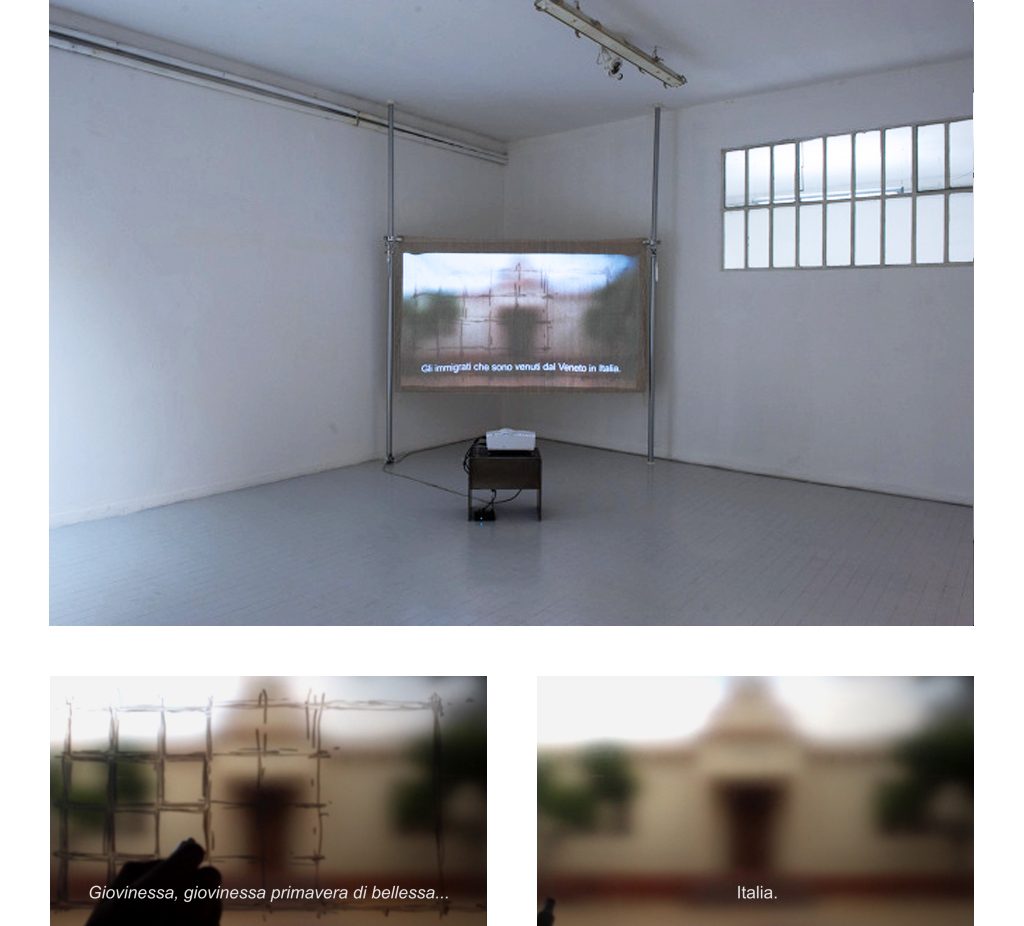
Nina Fiocco, Vicious circle (Casa del Fascio), 2017 – Video HD, 10.20 Minutes
.
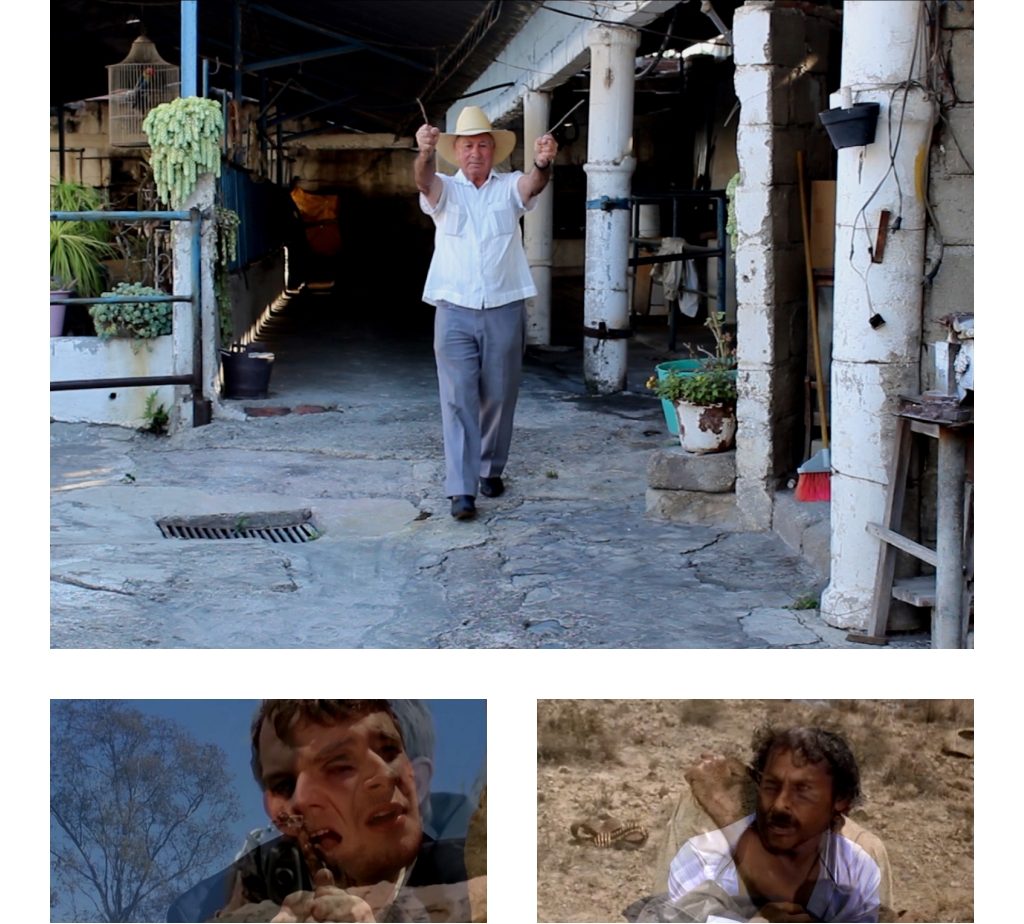
(ABOVE) Nina Fiocco, Sottosuolo, 2017 – Video HD, 30 Minutes / (BELOW) Nina Fiocco, Controcampo, 2017 – Video HD, 4.20 Minutes